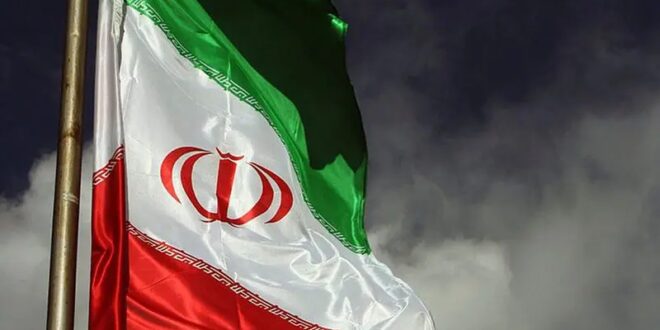From the invasion of Kuwait by the Iraqi army and the Gulf War, to 9/11 and the temporary fall of the Taliban regime in Afghanistan by the U.S., and the invasion of Iraq leading to the fall of Saddam Hussein’s regime, handing Iraq over on a silver platter to the Quds Force and its organized networks, the Iranian regime has been the strategic winner of these events.
Iraq, due to its geopolitical location, its shared 1,400 km border with Iran, and its over 60% Shia population, as well as being home to the shrines of eight Shia Imams, including Imam Hussein, the third Shia Imam and the focal point for millions of Shia pilgrims each year, became the cornerstone of the Iranian regime’s strategy for exporting crises and terrorism under the guise of exporting the revolution.
The fall of the Ba’ath government and the weakening of national forces in Iraq, alongside the disarmament and forced relocation of the Iranian opposition movement stationed near the Iran-Iraq border, paved the way for Iran’s strategic influence to spread in Iraq, Syria, Lebanon, Palestine, and Yemen. The policy of appeasement further solidified and strengthened this influence.
The Iranian regime, with its policy of suppressing a dissatisfied Iranian society and exporting the revolution (Islamic reactionary), founded the Revolutionary Guards (IRGC) to ensure its survival. With the creation of proxy groups and its pursuit of nuclear weapons to guarantee its longevity, it has become the main driver of crisis and instability in the Middle East. The IRGC, as the regime’s military arm, has built a financial empire by seizing control of oil, gas, petrochemicals, hostage-taking, and drug trafficking, and alongside the looting institutions under Khamenei’s supervision, it funds, trains, and logistically supports proxy groups.
From the early days of the 1979 anti-monarchic revolution, the Iranian regime began organizing Shias in Iraq and Lebanon. In 1982, during the peak of Lebanon’s civil war and under the pretext of fighting Israel, Iran sent a group of 1,000 IRGC members to Lebanon. There, they trained and armed a group of Lebanese Shias, establishing Hezbollah.
Iran has spent tens of billions of dollars to create and maintain Hezbollah, allocating hundreds of millions annually. In a speech regarding Hezbollah’s financial support, Hassan Nasrallah stated: “The budget, expenditures, food, missiles, and weapons are all provided by the Islamic Republic of Iran. As long as Iran has money, we have money. To be more transparent, the funds allocated to us are delivered directly, not through banks, just like the missiles we use to threaten Israel. No law can prevent this money from reaching us. We have no financial problems.”
Brian Hook, the U.S. Special Representative for Iran, pointed out that Iran spends $700 million annually on Hezbollah. According to reports by publications like The Hill (U.S. Congress) and Al Arabiya, Hezbollah, with the help of the IRGC, runs a vast drug trafficking network, generating billions of dollars.
Now, with the explosion of Hezbollah pagers and Walkie-Talkies and the death of Hassan Nasrallah, Hezbollah’s leader, the Iranian regime has suffered a major blow. In an attempt to address its domestic crisis and suppress the bloody crackdown on protesters, the regime ignited the flames of war in Gaza, resulting in thousands of Palestinian casualties, including children. However, this war was a strategic miscalculation.
The Iranian regime, believing that the Biden administration’s appeasement policies and deals with Europe, along with the corridor created by bypassing sanctions and selling oil, provided a protective shield and financial lifeline, thought this war would be limited, much like the 2006 Hezbollah-Israel war. Initially, it felt victorious after Israel’s setback on October 7, but the sweetness quickly turned to poison, and the regime scrambled to prevent the flames of war from reaching it.
However, with Ismail Haniyeh’s death in Tehran and the killing of Hassan Nasrallah, coupled with Israel’s decision to destroy Hezbollah’s infrastructure and eliminate its ability to attack Israel, the Iranian regime is not only the strategic loser of the Gaza war but is now caught in a political and strategic deadlock, with Khamenei and his regime trapped as the head of the snake of fundamentalism and terrorism.
The state-run newspaper Ham-Mihan (September 30) described this deadlock as follows: “Today, as there are discussions and propaganda about sending forces to Lebanon and participating in the war, it should be noted that Iran in 1403 (2024) is different from previous decades. The kind of overseas presence like the fight against ISIS is no longer supported by public opinion as it once was. Technological competition also does not favour Iran. In such a situation, we must wait and see what the rulers decide. The third path—diplomacy, negotiation, and compromise with the West over the issue of Israel—is even more difficult than direct war. The future is very uncertain.”
Israel, by targeting the proxy forces of the Iranian regime, which are instruments of this regime’s power, especially their leaders like Ismail Haniyeh and Hassan Nasrallah, has placed the Iranian regime in a deadlock. Failing to respond will lead to the discouragement and loss of military and paramilitary forces. A military response, like what happened on October 1, 2024, will trigger a reciprocal reaction from Israel and drag the Iranian regime into the quagmire of the Gaza war.
Because the Iranian regime, due to its severe budget deficit, lacks the financial capability for an all-out war and is also facing the threat of a social uprising that could lead to its downfall. Additionally, the U.S. will stand by Israel, and the Iranian regime is deeply fearful of a direct war with Israel.
 Eurasia Press & News
Eurasia Press & News



